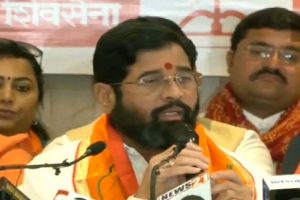As we approach the end of fiscal year 2023-24, the Centre is steering its economic ship through turbulent waters, aiming to achieve a fiscal deficit target of 5.9 per cent of Gross Domestic Product (GDP). Union Minister of state for Finance Bhagwat Karad has expressed optimism in this regard, emphasising the government’s commitment to financial prudence. The journey has, however, encountered its fair share of headwinds. With a fiscal deficit of Rs 8.4 lakh crore in the first seven months, constituting 45 per cent of the annual estimate, the government faces the intricate challenge of balancing revenue and expenditure. The delicate task of managing the fiscal deficit becomes even more pronounced given the backdrop of global economic uncertainties, in the midst of conflicts in different parts of the world. One of the key challenges lies in the government’s divestment strategy. As of December 13, a mere Rs 10,050 crore has been garnered from stake sales in government-run firms, a fraction of the ambitious Rs 51,000 crore target for a year whose end is approaching. Mr Karad acknowledged the discrepancy, attributing it to factors beyond the government’s control, such as market conditions and investor appetite. The real question on everyone’s mind is whether India breaks free from the shackles of a deficit dilemma.
The fiscal deficit, often likened to a financial tight-rope walk, demands a delicate equilibrium between revenue generation and expenditure control. While achieving the stipulated 5.9 per cent deficit seems plausible, the reliance on divestment proceeds adds an element of unpredictability to the equation. Historically, India has struggled to meet divestment targets, and the current fiscal year appears to follow a similar pattern. If the government falls short for the fifth consecutive year, it raises concerns about the effectiveness of divestment as a reliable revenue stream. The hurdles are multifaceted, encompassing market dynamics, investor sentiment, and broader economic conditions. In defence of the government’s stance, Mr Karad rightly points out the inherent volatility in divestment proceeds. Market conditions, often unpredictable, play a pivotal role in determining the success of stake sales. Additionally, investor appetite fluctuates in response to both domestic and global factors, introducing an element of uncertainty that policymakers must navigate. Yet, as we evaluate the fiscal landscape, it becomes imperative to explore alternative avenues for revenue generation.

Over reliance on divestment exposes the vulnerability of India’s fiscal strategy to factors beyond its control. Diversifying revenue streams, exploring innovative fiscal policies, and bolstering sectors with growth potential could provide a more stable foundation for fiscal health. While the government’s optimism about achieving the fiscal deficit target is commendable, prudence dictates a cautious approach. The intricate dance of managing deficits requires a harmonious blend of strategic planning and adaptability to dynamic economic landscapes. As India charts its course through fiscal uncertainties, a diversified approach to revenue generation might just be the compass needed to navigate these uncharted waters successfully.











